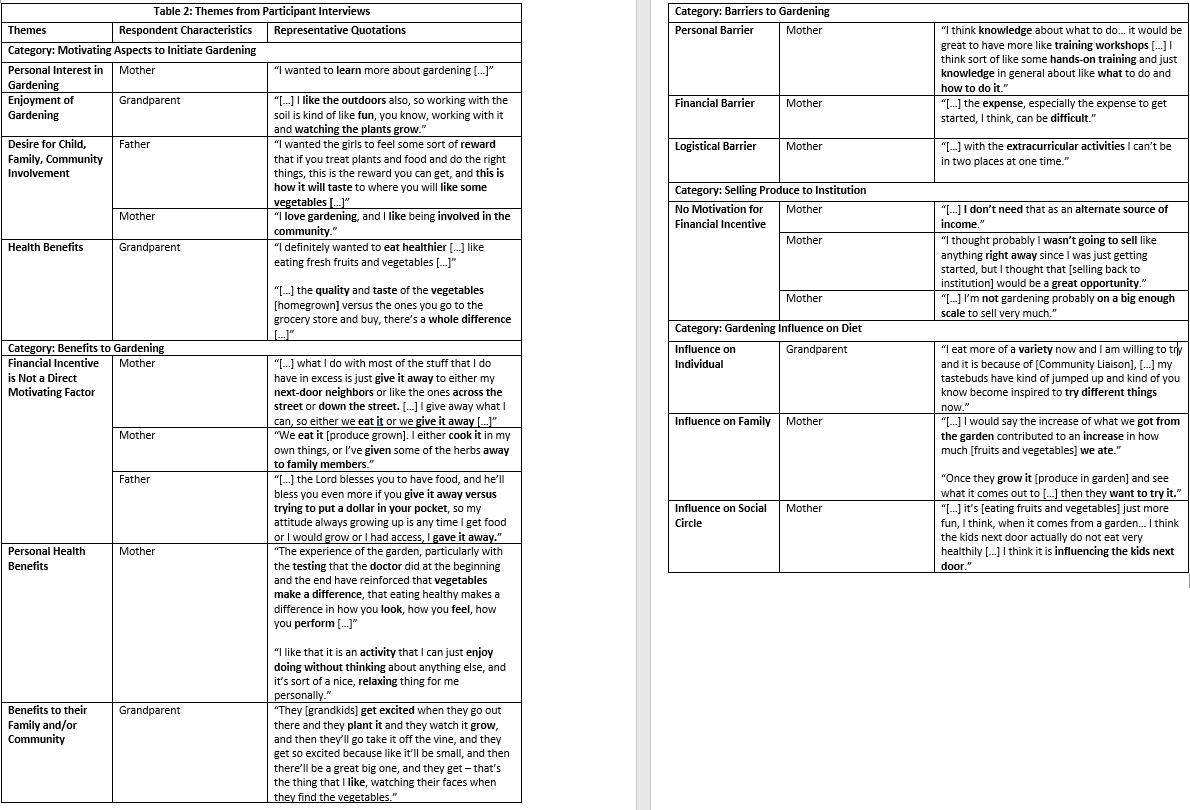Public Health & Prevention
Public Health & Prevention 3
340 - The feasibility and acceptability of Buckeye Institution-Supported Agriculture (ISA), a community-academic partnership to address food insecurity: a qualitative analysis
Publication Number: 340.447

Amanda E. Draeger, BS (she/her/hers)
Research Associate
Nationwide Children's Hospital
Columbus, Ohio, United States
Presenting Author(s)
Background:
Buckeye Institution Supported Agriculture (ISA) was initiated in 2017 to create a network of gardeners from economically disadvantaged neighborhoods, particularly in communities of color, to promote urban farming by providing access to tools, materials, and expertise. Buckeye ISA incentivized growing by allowing surplus to be sold to large academic institutions for procurement.
Objective:
We conducted qualitative interviews with participants to examine the acceptability and feasibility of Buckeye ISA, with specific goals to understand participant’s motivation to engage in gardening and examine the role of gardening as a means to increase household income, increase access to, and consumption of fruits and vegetables (F/V).
Design/Methods:
Central-Ohio families (n=126) participated from 2018-2022 across a network of seven community sites. Households had access to 3 corporate and 23 non-profit partners to sell their surplus food. Inclusion criteria were families with at least one child, 2-8 years of age, and regular participation in local community garden activities. Community liaisons recruited participant households, worked with them on business plans for their home production enterprises, tended to participants’ day-to-day needs in learning to garden, and coordinated support and training with the academic centers. Children (n=92) from willing families (n=65) were recruited from the larger cohort to provide optional quantitative measures (data analysis underway). Qualitative interviews were conducted from willing participants (n=8) between growing seasons, via a virtual platform in 2020-2022.
Results:
Qualitative findings show that main motivators to start gardening are a personal interest in and enjoyment of gardening, a desire for child, family, and community involvement, and expected health benefits. Because of gardening, participants shared positive impacts on mental and physical health for themselves, their immediate families, and often their social circle. Impacts are increased access to fresh F/V, a willingness to try new F/V, and an increase in F/V consumption. While some participants shared an interest in the potential for additional income, financial incentive was not a major reason to participate. Child participant demographics included in Table 1. Themes included in Table 2.
Conclusion(s):
Families that participated in Buckeye ISA expressed overarching positive impacts of gardening for individuals, families, and social circles. Motivation to participate and engage in gardening is influenced by one’s previous experiences, interests, and desired health outcomes, not financial incentive. .png)

